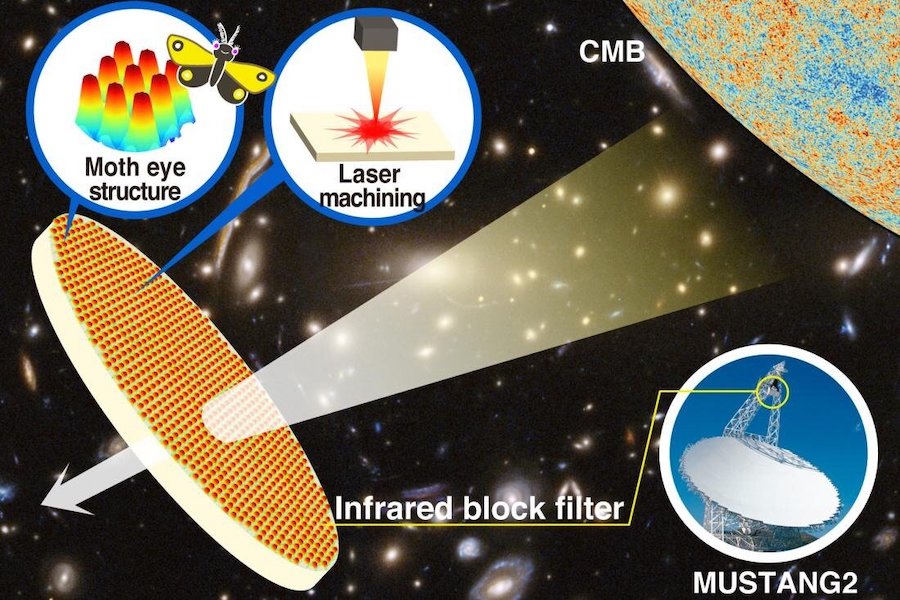How an aluminum product is helping scientists better understand the Big Bang
To study the CMB, telescopes must be tuned to wavelengths in which this cosmic microwave background is most intense, about 1-3 mm, and they must separate out shorter wavelength radiation that the atmosphere and Milky Way emit. Among the most effective optical elements that absorb the short wavelength radiation but let the CMB pass through is alumina. But one challenge of using alumina is that it also reflects almost 50% of the radiation impinging on it.
However, paper co-authors Tomotake Matsumura and Shaul Hanany came up with a new way to fabricate anti-reflective structures that reduce reflections fifty-fold.

The researchers patterned the alumina used in optical elements with small pyramidal structures, which are about one millimeter tall and repeat across a 30-centimeter diameter with a periodicity of just less than one millimeter. It has long been known that incorporating such structures on the surfaces of materials reduces reflections. With the small pyramids, light enters and is leaving the material more gradually, leading to much lower reflection.
Matsumura and Hanany’s innovation is in the way they patterned the alumina, which is too hard to be machined with standard tools. They used ultra-short pulsed laser, with pulses trillionths of a second long and reaching 100 megawatts each, to ablate the material away and to shape the surface relief to its optimal anti-reflective shape.
Within about four days, the laser process produced 320,000 pyramids on both sides of the alumina disc. The researchers measured the properties of the alumina sample and showed that it reflects less than 1% of the incident radiation. This is the first time such an optical element has been fabricated and coupled to an operating instrument, and it is the largest sample of alumina to have been laser-ablated.
In detail, the new anti-reflective structures were applied to an alumina short-wavelength absorber and provided to scientists at the University of Pennsylvania operating the MUSTANG2, a device that measures the power of incident electromagnetic radiation and which is now conducting sky observations with the new technology, demonstrating its success.
“This innovation will lead to more efficient instruments peering back in time and revealing the physical process at the Big Bang and throughout the evolution of the universe,” the pair behind the development said in a media statement.




